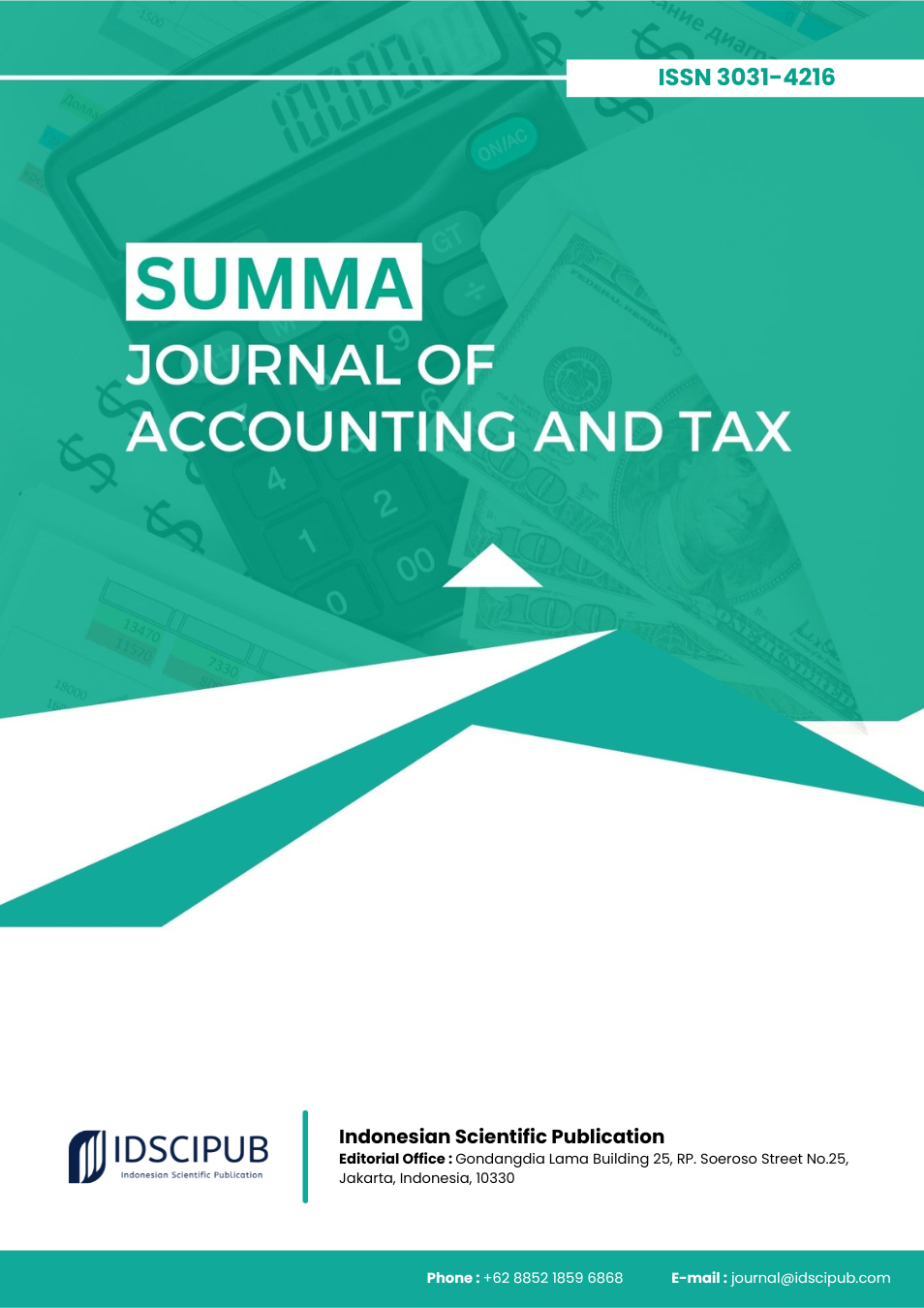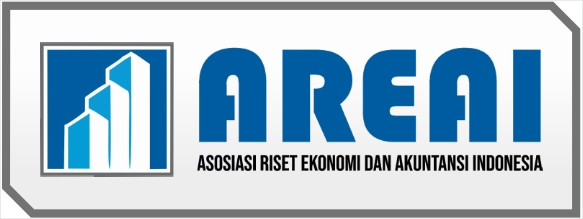Share Value Of Halal Food Product Company And Its Independent Factors
DOI:
https://doi.org/10.61978/summa.v2i2.230Keywords:
Company value, Profitability, Leverage, JII 70, Halal FoodAbstract
Introduction/Main Objectives: This article aims to analyze the value of halal food product companies whose shares are listed on the Jakarta Islamic Index 70 during the period 2020 to 2022 and independent factors that influence it. It is necessary to carry out an analysis of the factors that influence the share value of sharia food product companies to provide investors with an overview of the performance of halal food product company shares to obtain an increase in investment value in this type of share which ultimately helps the development of the halal food industry in Indonesia and can be a reference for the development of the halal food industry in other ASEAN countries and the world. Research Methods: Research data was obtained from the Indonesia Stock Exchange website in the form of financial reports and the research method used was quantitative, starting with descriptive tests and then continuing with multiple linear regression tests. Finding/Results: From the research results, it was found that the average value of halal food product companies whose shares are registered on JII 70 is still overvalued, and tends to decline, while the average profitability value is good, but this is not the case with the leverage value which is in the warning category. Profitability and leverage factors are proven to influence company value. Conclusion: It is recommended that players in the halal food product industry hope to improve their financial performance and be more anticipatory of all existing risks such as pandemics or other crises, to increase the sustainability of investor confidence.
References
Afriyanty, N., Isnaini, D., & Oktarina, A. (2020). Lembaga Keuangan Syariah. CV Zigie Utama.
Anggraeni, E. P., & Rahmayanti, D. (2023). Assessing Long-Term and Short-Term Relationships on Company Profits Through The Company ’ s Internal. Mutanaqishah : Journal of Islamic Banking, 3(1), 14–26. https://doi.org/10.54045/mutanaqishah.v3i1.664
Birken, E. G., & Curry, B. (2021). Understanding Return On Assets (ROA. https://www.forbes.com/advisor/investing/roa-return-on-assets/
Dinar, S. (2022). State of the Global Islamic Economy Report.
Early, S. (2023). Understanding Debt to Equity Ratio in Stock Fundamental Analysis. https://snips.stockbit.com/investasi/debt-to-equity-ratio
Faradila, S., Effendi, K., & A. (2023). Analysis Of Financial Performance And Macroeconomic On Firm Value. Jurnal Manajemen, 27(2), 276–296. https://doi.org/10.24912/jm.v27i2.1255
Fernando, J. (2023). Enterprise Value (EV) Formula and What It Means. https://www.investopedia.com/terms/e/enterprisevalue.asp
Handoyo, S., Suharman, H., Ghani, E. K., & Soedarsono, S. (2023). Competition Intensity and Its Implication on Open Innovation. Journal of Open Innovation: Technology, Market, and Complexity, 9(2), 100039. https://doi.org/10.1016/j.joitmc.2023.100039
Hartoyo, A., Darman, & Abdullah, A. (2023). The Effect of Financial Performance and Company Size on CompanyValue: A Review of Literature Studies. The Es Accounting and Finance, 2(1), 35–40. https://doi.org/10.58812/esaf.v2i01.171
Hayes, A. (2023). What Are Capital Markets, and How Do They Work? https://www.investopedia.com/terms/c/capitalmarkets.asp
I.B.R.A. (2018). INDONESIAN SHARIA ECONOMIC MASTERPLAN 2019-2024.
Ibrahim, U. A., & Isiaka, A. (2020). Effect of financial leverage on firm value: Evidence from selected firms quoted on the Nigerian stock exchange. European Journal of Business and Management, 12(3), 3–16. https://doi.org/10.7176/EJBM/12
JIHADI, M., VILANTIKA, E., HASHEMI, S., ARIFIN, Z., BACHTIAR, Y., & SHOLICHAH, F. (2021). The Effect of Liquidity, Leverage, and Profitability on Firm Value: Empirical Evidence from Indonesia. Journal of Asian Finance, Economics and Business, 8(3), 423–431. https://doi.org/10.13106/jafeb.2021.vol8.no3.0423
Kasmir. (2018). Analisis Laporan Keuangan. PT Raja Grafindo Persada.
Khan, A. (2020). How do petroleum prices and investments impact the dynamics of firm value ? System Dynamics Review, 36(1), 74–100. https://doi.org/10.1002/sdr.1649
Kuncoro, W., & Suriani, W. O. (2020). Achieving sustainable competitive advantage through product innovation and market driving. Asia Pacific Management Review, 23(3), 186–192. https://doi.org/10.1016/j.apmrv.2017.07.006
Lestari, E. (2023). DEBT TO EQUITY RATIO (DER. AND FIRM SIZE TOWARD FIRM VALUE :THE MEDIATING ROLE OF RETURN ON ASSET. Return: Study of Management, 2(11), 1095–1109. https://doi.org/10.57096/return.v2i11.172
Lestari, E., Hidayat, I., Askiyanto, M., Setyawati, Y., & Ikis, L. (2023). Analysis of Factors Affecting the Financial Performance in Cooperatives (Study at KPRI Universitas Brawijaya. Indonesian Journal of Economics and Management, 4(1), 1–9. https://doi.org/10.35313/ijem.v4i1.4892
Lyman, C. (2023). PBV Adalah Price to Book Value: Pengertian & Rumusnya! https://pintu.co.id/blog/pengertian-pbv-adalah-rumus-cara-menghitung
Nartasari, D. (2022). Company Value as Consideration in Making Individual Stock Investment Decisions (Hermeneutical-Critical Study. Jurnal Ilmu Ekonomi Dan Manajemen, 13(1), 11–18. http://jurnal.untag-sby.ac.id/index.php/die/index
Nopiana, P., & Novita, W. (2022). Analysis Stock Price Comparison with Price To Book Value (PBV) Method as the Basis for Investment Decisions At Starup Indonesia Company. International Journal of Islamic Business and Management Review, 2(2), 192–201. https://doi.org/https://doi.org/https://www.researchgate.net/deref/https%3A%2F%2Fdoi.org%2F10.54099%2Fijibmr.v2i2.401?_tp=eyJjb250ZXh0Ijp7ImZpcnN0UGFnZSI6InB1YmxpY2F0aW9uIiwicGFnZSI6InB1YmxpY2F0aW9uIiwicG9zaXRpb24iOiJwYWdlQ29udGVudCJ9fQ
Nurminda, A., Isynurwadhana, D., & Nurbaiti, A. (2017). Pengaruh Profitabilitas, Leverage, Dan Ukuran Perusahaan Terhadap Nilai Perusahaan (studi Pada Perusahaan Manufaktur Sub Sektor Barang Dan Konsumsi Yang Terdaftar Di Bursa Efek Indonesia Periode 2012-2015) | Nurminda | eProceedings of Management.
Octaviany, A., Hidayat, S., & Miftahudin, M. (2019). Pengaruh Ukuran Perusahaan dan Leverage terhadap Nilai Perusahaan dengan Profitabilitas sebagai Variabel Intervening. Jurnal Riset Inspirasi Manajemen Dan Kewirausahaan, 3(1), 30–36. https://doi.org/10.35130/JRIMK.V3I1.48
Pangestuti, D. C., Muktiyanto, A., Geraldina, I., & Darmawan. (2022). ROLE OF PROFITABILITY, BUSINESS RISK, AND INTELLECTUAL CAPITAL IN INCREASING FIRM VALUE. Journal of Indonesian Economy and Business, 37(3), 311 – 338. https://doi.org/ISSN
Purbawangsa, I. B., Solimun, S., Fernandes, A. A., & Mangesti Rahayu, S. (2020). Corporate governance, corporate profitability toward corporate social responsibility disclosure and corporate value (comparative study in Indonesia, China and India stock exchange in 2013-2016. Social Responsibility Journal, 16(7), 983–999. https://doi.org/10.1108/SRJ-08-2017-0160
Putra, K. H., & Thenikusuma, K. (2020). The Role of the Capital Market on the Economy. SSRN Product and Services. https://doi.org/10.2139/ssrn.3523162
Rahmadani, F. D., & Rahayu, S. M. (2017). PENGARUH GOOD CORPORATE GOVERNANCE (GCG. In PROFITABILITAS DAN LEVERAGE TERHADAP NILAI PERUSAHAAN (Studi Kasus pada Perusahan Perbankan yang Terdaftar Pada BEI Periode 2013-2015) | Rahmadani | Jurnal Administrasi Bisnis.
Rifai, A. (2022). Sharia Principles in Sharia Capital Market. Budapest International Research and Critics Institute Journal, 5(4), 28913–28922. https://doi.org/10.33258/birci.v5i4.7044
Rudangga, I. G. N. G., & Sudiarta, G. M. (2016). Pengaruh Profitabilitas, Leverage, Dan Ukuran Perusahaan Terhadap Nilai Perusahaan (studi Pada Perusahaan Manufaktur Sub Sektor Barang Dan Konsumsi Yang Terdaftar Di Bursa Efek Indonesia Periode 2012-2015) | Nurminda | eProceedings of Management. E-Jurnal Manajemen, 5(7), 4394–4422.
Simanjuntak, T. F., Siahaan, Y., Inrawan, A., & Supitriyani, S. (2019). Pengaruh Leverage Dan Profitabilitas Terhadap Nilai Perusahaan Dengan Kebijakan Dividen Sebagai Variabel Moderating Pada Perusahaan Sub Sektor Property Dan Real Estate Yang Terdaftar Di Bursa Efek Indonesia. Financial: Jurnal Akuntansi, 5(1), 49–57. https://doi.org/10.37403/financial.v5i1.92
Sondakh, P., Saerang, I., & Samadi, R. (2019). PENGARUH STRUKTUR MODAL (R. O. E. D. A. N. D. E. R. ) T. E. R. H. A. D. A. P. N. I. L. A. I. P. E. R. U. S. A. H. A. A. N. P. A. D. A. P. E. R. U. S. A. H. A. A. N. S. E. K. T. O. R. P. R. O. P. E. R. T. I. Y. A. N. G. T. E. R. D. A. F. T. A. R. D. I. B. E. I. ROA, Ed.; Vol. 7, Issue 3, pp. 3079–3088). https://doi.org/10.35794/EMBA.7.3.2019.24196
Sutama, D. R., & Lisa, E. (2018). PENGARUH LEVERAGE DAN PROFITABILITAS TERHADAP NILAI PERUSAHAAN (Studi pada Perusahaan Sektor Manufaktur Food and Beverage yang terdaftar di Bursa Efek Indonesia. Sains Manajemen Dan Akuntansi, X(2), 65–85.
TN, B., Nguyen, X., & Pham, K. (2023). The Effect of Capital Structure on Firm Value: A Study of Companies Listed on the Vietnamese Stock Market. International Journal of Financial Studies, 11(3). https://doi.org/10.3390/ijfs11030100
Wahyudi, I., & Anwar, G. (2014). Interdependence between Islamic capital market and money market : Evidence from Indonesia. Borsa Istanbul Review, 14(1), 32–47. https://doi.org/10.1016/j.bir.2013.11.001
Wiyono, G., & Kusuma, H. (2017). Manajemen Keuangan Lanjutan Berbasis Corporate Value Creation Edisi Kesatu (Pertama. UPP STIM YKPN.
Wulandari, N. M. I., & Wiksuana, I. G. B. (2017). Peranan Corporate Social Responsibility Dalam Memoderasi Pengaruh Terhadap Nilai Perusahaan. E-Jurnal Manajemen Unud, 6(3), 1278–1311.
Yusmaniarti, S., H., & Pitaloka, L. (2019). Pengaruh Good Corporate Governance, Profitabilitas, Dan Leverage Terhadap Nilai Perusahaan Pada Perusahaan Property Dan Real Estate Indonesia. Jurnal Ilmiah Akuntansi, 3(4), 406–418.







